A complete guide to vendor management system (VMS)
In today’s fast-paced business environment, managing multiple vendors efficiently is crucial to maintaining a streamlined supply chain and ensuring quality service delivery. A Vendor Management System (VMS) serves as an all-in-one platform that simplifies the process of managing third-party vendors, ensuring compliance, tracking performance, and optimizing costs.
For businesses of all sizes, especially those that deal with a vast network of suppliers and contractors, adopting a robust VMS can lead to improved efficiency, risk mitigation, and cost savings. This guide will delve into the essentials of vendor management and how a VMS can transform your vendor-related processes.
What is vendor management?
Vendor management refers to the process by which businesses strategically manage their relationships with third-party suppliers or service providers. It involves identifying and selecting vendors, negotiating contracts, monitoring performance, ensuring compliance with standards, and mitigating risks.
Effective vendor management ensures that businesses can secure the best value from their suppliers while maintaining productive, long-term partnerships. By streamlining procurement, improving communication, and establishing clear expectations, vendor management enhances the quality of goods and services delivered, ultimately contributing to the business's overall success.
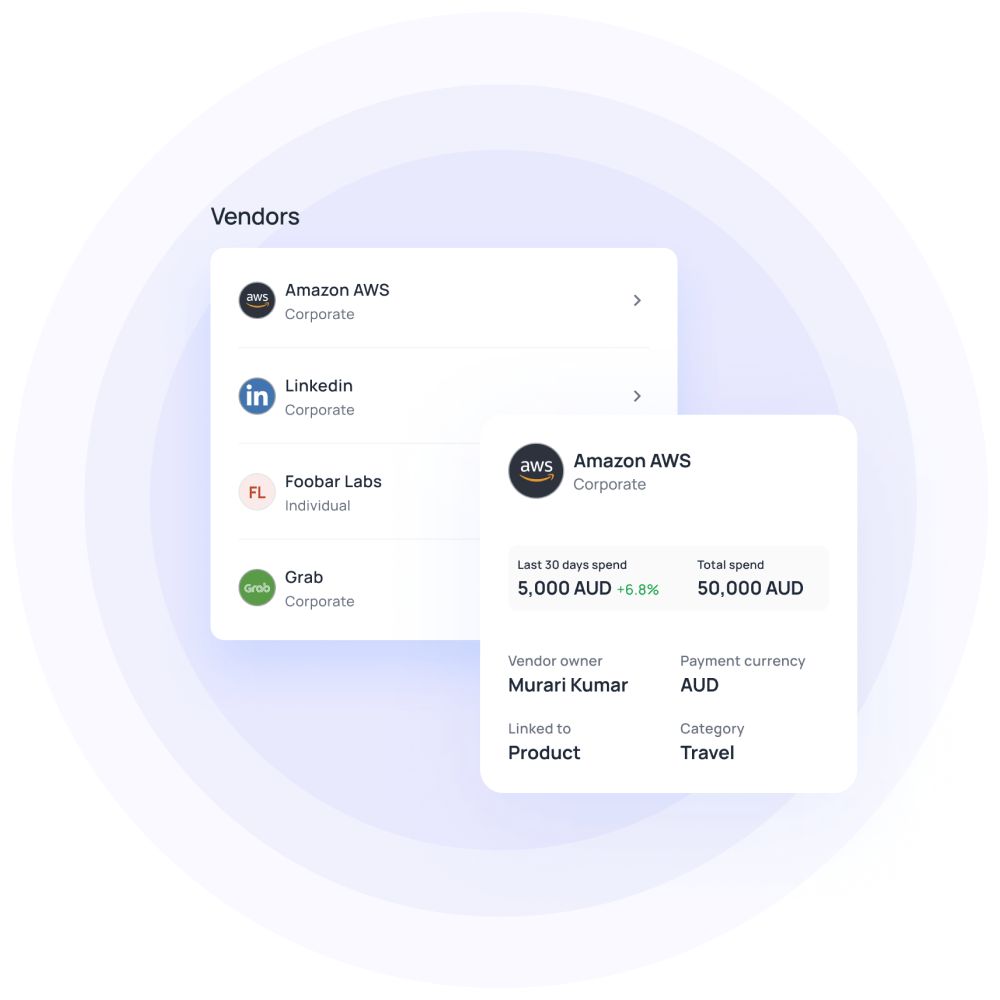
Why is effective vendor management important for a business?
Effective vendor management is essential for businesses to remain competitive and maintain operational efficiency. It helps companies optimize costs, enhance the quality of goods and services, and build stronger relationships with suppliers.
A well-structured vendor management system ensures compliance with legal standards, facilitates better decision-making, and enables businesses to anticipate future trends through detailed performance analysis.
Reduce costs with better negotiation and contract terms
A solid vendor management strategy enables businesses to negotiate favorable contract terms, securing cost-effective deals that benefit the bottom line.
By leveraging data-driven insights and competitive bidding processes, businesses can identify the most reliable vendors who offer the best value.
Improved contract management also minimizes hidden costs, such as delayed deliveries or non-compliance, contributing to more predictable and controlled spending.
Ensure high quality using performance metrics
Effective vendor management includes the use of key performance indicators (KPIs) to consistently monitor and assess vendor performance.
By setting clear expectations and regularly reviewing quality metrics like delivery timeliness, product accuracy, and service efficiency, businesses can ensure their vendors meet high standards.
This ongoing evaluation helps prevent quality issues, reducing disruptions and improving overall satisfaction with goods and services.
Improve efficiency by streamlining procurement processes
Vendor management systems automate and streamline the procurement process, reducing administrative burdens and speeding up sourcing decisions.
Centralizing vendor information and workflows enables businesses to quickly access critical data, compare suppliers, and process orders with minimal delays.
This efficiency not only reduces operational bottlenecks but also frees up resources, allowing teams to focus on more strategic tasks.
Build strong, collaborative vendor relationships
Strong vendor relationships are key to long-term success, and effective vendor management fosters trust and collaboration.
Regular communication, transparency in expectations, and mutual benefits help cultivate partnerships where vendors are more likely to prioritize your needs.
Strong relationships also create opportunities for joint problem-solving, innovation, and flexibility, which can be invaluable when dealing with challenges or changes in business demands.
Maintain consistent legal and ethical compliance
A robust vendor management system ensures that all vendor relationships are compliant with applicable laws and ethical standards.
By carefully vetting suppliers and regularly reviewing contracts, businesses can avoid legal risks related to labor laws, environmental regulations, or data security.
This not only safeguards the company’s reputation but also prevents costly fines and legal disputes.
Make smarter decisions through performance tracking
Tracking vendor performance over time allows businesses to make data-driven decisions about their supply chain.
By analyzing trends in cost, quality, and timeliness, companies can identify which vendors offer the best long-term value and which may need improvement or replacement. This informed decision-making process reduces risk and ensures that business objectives are consistently met.
Improve forecasting with vendor performance data
Vendor performance data offers valuable insights that can improve business forecasting.
Historical data on vendor reliability, lead times, and quality trends help businesses predict future performance, enabling more accurate demand planning.
With better forecasting, businesses can manage inventory more effectively, avoid supply chain disruptions, and optimize production schedules for smoother operations.
What are the steps involved in the vendor management process?
Effective vendor management requires a systematic approach to ensure optimal supplier performance and long-term partnerships. Each step in the process is designed to align vendors with your business goals, mitigate risks, and maximize value.
Here’s a breakdown of the essential steps involved in a successful vendor management process.
Identify needs and define goals
The first step in vendor management is to clearly identify your business’s specific needs and objectives. This involves determining the goods or services required, as well as the quantity, quality, and delivery expectations.
Additionally, businesses should consider any unique requirements, such as compliance with industry standards or certifications.
Defining these goals ensures that you find vendors who align with your operational and strategic needs.
Establishing clear objectives at this stage helps streamline the selection process, aligns all stakeholders, and sets a foundation for evaluating vendor success later.
Set criteria for vendor selection
Once the needs are defined, establish the criteria for selecting vendors. These criteria can include price, product quality, reliability, delivery speed, and industry experience.
Other important factors may include technological capabilities, innovation potential, financial stability, and geographical proximity.
You may also want to carefully evaluate potential vendors based on their reputation, sustainability practices, long-term viability, and ability to scale with your growing business.
By setting clear criteria, you can objectively assess vendors and ensure that the chosen suppliers meet both your current and future business requirements effectively.
Select vendors that meet criteria
After setting selection criteria, businesses can start the vendor selection process. This involves researching, evaluating, and comparing vendors to identify those that best meet your needs.
Some companies use requests for proposals (RFPs) or tenders to gather bids. Beyond price and product offering, assessing vendor compatibility with your business culture, values, and long-term growth plans is essential.
Careful vetting of each vendor’s offerings, references, financial health, and past performance helps ensure you choose a reliable partner that will deliver value, innovation, and scalability over the long term.
Negotiate favorable terms and conditions
Negotiation is critical in securing favorable contract terms. This stage includes discussing pricing, payment terms, service levels, delivery schedules, and performance metrics.
Both parties should strive to agree on terms that are fair, clear, and mutually beneficial. Businesses should also consider clauses around intellectual property, data security, termination conditions, and liability.
A clear and detailed contract provides a solid foundation for managing expectations, handling potential disputes, and ensuring ongoing alignment with business objectives, ensuring a smooth and productive relationship over time.
Onboard vendors into your systems
Once vendors are selected and contracts signed, it’s essential to onboard them into your company’s procurement and operational systems.
This includes setting up vendor profiles, integrating their workflows with your processes, and providing them with the necessary tools or training to ensure compliance with your procedures.
Additionally, aligning the vendors with your company’s communication channels and policies is important.
Effective onboarding ensures that new vendors can quickly begin delivering products or services without disruptions while minimizing errors, improving collaboration, and ensuring both parties are on the same page from the start.
Monitor vendor performance and metrics
Continuous monitoring of vendor performance is crucial to ensuring they meet agreed-upon standards.
This involves tracking key performance indicators (KPIs) such as delivery times, product quality, and customer satisfaction.
Beyond immediate performance metrics, you should also assess vendors' adaptability to changing needs, cost efficiency, and innovation contributions.
Regular performance reviews help identify areas for improvement and ensure vendors continue to meet business expectations, supporting long-term operational efficiency and reducing the risk of service disruptions.
Ensure compliance with legal standards
Vendors must comply with all relevant legal and regulatory requirements, from labor laws to environmental regulations.
Regular audits and assessments ensure that your vendors adhere to these standards, helping protect your business from legal risks.
Additionally, businesses should enforce compliance with data privacy laws like GDPR, as well as health and safety regulations.
This also includes compliance with industry-specific standards, corporate social responsibility (CSR) policies, and cybersecurity requirements, which are vital for maintaining your company’s reputation, ensuring ethical practices, and avoiding costly fines or operational disruptions.
Communicate regularly to maintain contact
Effective vendor management requires clear and open communication. Establish regular touchpoints, such as meetings or status updates, to stay informed about vendor progress and address any concerns.
Communication should be both proactive and responsive in order to effectively address potential challenges early on.
Regularly updating vendors on changing business needs, market trends, or new project requirements ensures alignment.
Consistent and transparent communication strengthens collaboration, reduces the chances of misunderstandings or delays, and builds a more robust partnership that supports long-term goals.
Resolve issues and disputes promptly
No vendor relationship is without challenges, and prompt issue resolution is critical to maintaining smooth operations.
Whether the issue is related to delivery delays, quality control, or contract discrepancies, having a clear process in place for resolving disputes helps prevent minor problems from escalating into larger conflicts.
Businesses should also ensure there are defined escalation points and communication channels for resolving these issues.
Early intervention and collaboration with the vendor ensure minimal disruption to your business and help maintain a positive, productive relationship while mitigating potential long-term risks.
Manage and strengthen vendor relationships
Building long-term, collaborative vendor relationships is key for sustained success. This involves investing in partnerships by providing feedback, offering incentives for exceptional performance, and fostering mutual respect.
Regularly engaging vendors in discussions about long-term goals, innovation, and strategic planning strengthens bonds.
Strong relationships lead to improved problem-solving, trust, and potential future collaboration, ultimately driving value for both parties.
Additionally, nurturing these partnerships can result in better contract terms, improved service levels, and shared innovations that benefit both the vendor and the business.
Review vendor alignment with strategy
Periodically reviewing vendor performance and their alignment with your overall business strategy is essential.
This step ensures that vendors continue to meet evolving business needs and that their services or products still offer strategic value. It’s important to assess whether vendors contribute to long-term goals, such as innovation or market expansion.
Any gaps identified during this review may lead to changes in the vendor base, performance expectations, or even contract modifications to ensure ongoing alignment with your company’s strategic objectives.
Evaluate performance and renew contracts
At the end of a vendor contract cycle, businesses should formally evaluate vendor performance based on KPIs and other metrics.
This assessment determines whether to renew the contract, renegotiate terms, or seek alternative vendors. Performance evaluations should include factors like reliability, cost efficiency, and responsiveness to evolving needs.
A thorough review process ensures that the business continues to receive the best possible service, price, and quality from its suppliers while identifying opportunities for improved collaboration or areas where performance can be optimized.
Optimize your vendor management process with Volopay
What challenges does a business face in vendor management?
Vendor management, while essential, presents challenges that businesses must overcome to maintain smooth operations. From handling complex documentation to reducing risks and ensuring compliance, navigating the vendor landscape can be demanding.
Below are some of the key challenges businesses face when managing vendor relationships and processes.
Securing favorable contract terms
Negotiating contracts that align with business goals and minimize risks is challenging. Securing favorable terms, like competitive pricing, flexible agreements, and clear KPIs—requires skillful negotiation.
This involves negotiating risk management clauses, dispute resolution methods, and performance guarantees to safeguard business interests.
Failure to achieve favorable terms can result in higher costs, reduced service quality, and limited recourse in case of disputes, making it crucial to strike a balance between the vendor's and business’s interests.
Handling supplier dependency risks
Over-reliance on a single vendor or a small group of suppliers poses significant risks to a business's overall stability and operational efficiency.
Disruptions such as unexpected supply chain delays, sudden vendor insolvency, or changes in supplier operations can severely impact business continuity and disrupt daily operations.
Diversifying the vendor base and developing contingency plans are vital strategies to mitigate these risks, but it can be challenging to identify alternatives without sacrificing quality or cost efficiency.
Ensuring adherence to regulations
Regulatory compliance is a critical part of vendor management.
Vendors must adhere to various legal, environmental, and industry-specific standards, and businesses are responsible for ensuring their partners remain compliant with these important regulations.
The challenge lies in consistently monitoring and auditing vendors across multiple jurisdictions, especially in highly regulated industries like healthcare or finance.
Non-compliance could lead to penalties, lawsuits, or reputational damage.
Managing extensive documentation
Vendor management involves handling large volumes of paperwork, including contracts, service-level agreements (SLAs), compliance records, and performance reports. Tracking these documents can become overwhelming when managing multiple suppliers.
As businesses grow and diversify their vendor base, manual processes can become inefficient and error-prone.
Proper organization and accessibility of documentation are critical to ensuring transparency, legal compliance, and efficient vendor performance tracking, which can become a bottleneck if unmanaged.
Implementing digital document management systems or a vendor management system (VMS) can significantly improve document handling efficiency.
Reducing vendor-related risks
Vendor-related risks, such as financial instability, quality issues, or cybersecurity threats, are a constant concern for businesses. Identifying, assessing, and mitigating these risks requires thorough due diligence and ongoing monitoring.
These risks can also include supply chain disruptions, compliance failures, and ethical concerns, which may affect business continuity.
Businesses may face difficulties in predicting or addressing risks early on, which can lead to disruptions, loss of revenue, or damage to the company’s reputation if vendor failures occur.
Implementing a risk management strategy, including regular risk assessments and contingency planning, can help significantly minimize these risks.
Streamlining the onboarding process
Onboarding new vendors can be a time-consuming and complex process, especially if a business lacks a structured system. It involves integrating vendor data into procurement systems, ensuring they meet compliance standards, and aligning them with your business processes.
The process also includes setting up clear communication channels, providing training on company policies, and establishing reporting protocols.
Without a streamlined onboarding system, the process can delay the start of vendor relationships and increase administrative overhead, impacting overall efficiency.
Automation and using a vendor management system can significantly reduce the complexity and time involved in onboarding.
Effective vendor communication
Effective communication between businesses and vendors is crucial to ensuring alignment on goals, timelines, and expectations.
Miscommunication can lead to misunderstandings, delays, and reduced performance. Managing communication across multiple vendors, particularly in different time zones or regions, can be difficult.
Consistent and transparent communication channels must be effectively established and maintained to avoid potential conflicts and ensure smooth collaboration.
Implementing and optimizing automation
Automation can greatly simplify vendor management tasks like procurement, contract tracking, and performance monitoring.
However, implementing an automated vendor management system presents its own set of challenges.
Selecting the right technology, training staff, and ensuring the system integrates well with existing processes requires planning and investment. Once implemented, businesses may also face challenges in optimizing automation to fully realize its benefits.
Addressing conflicts and disputes
Disputes are inevitable in vendor relationships, whether due to unmet expectations, delivery delays, or contract misunderstandings.
Addressing conflicts promptly and effectively is critical to maintaining strong relationships. The challenge is resolving these issues without damaging the partnership or causing significant disruptions to operations.
Clear dispute-resolution mechanisms, open communication, and a collaborative approach are essential to overcoming this challenge, but they require careful management.
How can businesses overcome the challenges related to vendor management?
Overcoming vendor management challenges requires a strategic approach that emphasizes strong communication, performance monitoring, and effective risk management. By adopting best practices and leveraging technology, businesses can build more reliable vendor relationships, enhance efficiency, and mitigate risks, ensuring smoother operations across the supply chain.
Implement clear communication channels
Establishing clear and open communication channels is crucial for maintaining a productive vendor relationship.
Businesses should set up regular meetings, status updates, and feedback loops to ensure all parties are aligned on expectations, deadlines, and performance metrics.
Transparent communication helps address issues early, preventing misunderstandings and delays, while fostering a collaborative, responsive environment between the business and vendors, ultimately driving smoother operations and enhancing efficiency across the partnership.
Develop a robust vendor selection process
Having a strong vendor selection process in place is essential to mitigating risks and ensuring reliable partnerships.
Businesses should perform due diligence, evaluate potential vendors against set criteria, and assess factors like financial stability, past performance, and scalability.
A well-defined process ensures that vendors who align with your goals and standards are chosen, reducing potential issues. Additionally, continuously updating the selection process based on past experiences helps refine vendor partnerships and ensure long-term success.
Establish strong vendor relationships
Building strong, long-term relationships with vendors is key to overcoming challenges.
Businesses should treat vendors as strategic partners rather than just service providers. This involves regularly engaging with them, recognizing good performance, and offering fair incentives.
Establishing trust and collaboration not only strengthens the partnership but also encourages vendors to be more flexible and responsive to your business needs, leading to higher-quality service and better alignment on long-term business goals.
Regularly review and update vendor contracts
Contracts should be regularly reviewed and updated to reflect current business requirements and market conditions.
Businesses need to ensure that terms, conditions, and performance expectations are clearly defined and periodically revisited to avoid misunderstandings or gaps.
Regular contract reviews also provide an opportunity to renegotiate pricing or adjust terms if the vendor’s circumstances or broader market dynamics change.
Conduct regular performance reviews
Routine performance reviews help ensure vendors are meeting their contractual obligations. These reviews should focus on KPIs, delivery timelines, and compliance with quality standards.
Identifying areas where vendors excel or fall short enables businesses to take corrective actions, such as addressing underperformance or rewarding excellent service, thereby improving overall vendor performance.
Regular feedback also fosters ongoing communication, enabling vendors to make necessary adjustments and align better with business needs, while maintaining accountability and encouraging continuous improvement.
Define and continuously monitor KPIs
Clearly defining key performance indicators (KPIs) for vendors ensures that expectations are understood from the outset. KPIs such as delivery time, product quality, and customer satisfaction should be tracked regularly.
Monitoring these metrics allows businesses to address performance issues proactively and helps in maintaining high standards, ultimately leading to better outcomes in vendor partnerships.
Regular reviews and periodic adjustments to KPIs help ensure that vendors remain closely aligned with evolving business objectives, fostering ongoing improvement and significantly strengthening the overall vendor relationship.
Create a vendor risk management plan
A vendor risk management plan is crucial for identifying and mitigating potential risks, such as supply chain disruptions, financial instability, or regulatory non-compliance.
Businesses should conduct risk assessments for each vendor, categorize risks based on severity, and develop contingency plans. A proactive risk management approach helps minimize disruptions and ensures business continuity in case of vendor-related issues.
Regularly updating the risk management plan to changing conditions strengthens preparedness, fostering resilience in vendor partnerships and reducing long-term vulnerabilities.
Provide ongoing training and support
Offering ongoing training and support to vendors helps ensure they remain aligned with your business processes and standards. Businesses can provide vendors with resources and tools to improve their performance, compliance, and efficiency.
Regular training also allows vendors to stay updated on evolving business needs, technology changes, and best practices, fostering a more productive partnership.
This continuous development enhances vendors’ ability to adapt to new challenges while promoting a culture of growth and collaboration that benefits both the business and the vendor.
Ensure compliance with regulations and standards
Maintaining vendor compliance with legal and industry standards is essential for effectively mitigating risks and avoiding costly penalties. Businesses should establish clear compliance guidelines and perform regular audits to ensure strict adherence.
Ensuring vendors consistently follow environmental, labor, and safety regulations helps protect both parties from potential legal and reputational damage, thereby safeguarding the business’s long-term interests.
Proactive compliance monitoring reduces the likelihood of operational disruptions and ensures that vendors remain aligned with evolving legal and regulatory landscapes, promoting sustainable and ethical partnerships.
Utilize a vendor management system (VMS)
Implementing vendor management software can simplify vendor management by automating tasks such as contract management, performance tracking, and compliance monitoring.
A VMS centralizes vendor data and workflows, making it easier to manage multiple vendors, assess performance, and handle documentation. Streamlining these processes reduces administrative burdens and allows businesses to focus on strategic decision-making and relationship-building.
Additionally, a VMS improves transparency, enhances communication, and ensures better tracking of vendor-related activities, ultimately leading to more efficient operations and stronger, data-driven vendor relationships.
Want a solution to solve your vendor management-related issues?
What is a vendor management system?
A vendor management system (VMS) is a centralized, cloud-based platform that helps businesses manage their relationships with third-party suppliers and service providers. It streamlines the procurement process by automating tasks such as vendor selection, onboarding, contract management, performance tracking, and compliance monitoring.
A VMS provides visibility into vendor activities, enabling businesses to track key performance indicators (KPIs), monitor costs, and ensure vendors meet regulatory standards. By consolidating vendor-related information in one platform, businesses can make data-driven decisions, reduce risks, and improve operational efficiency. A VMS is especially valuable for companies that work with multiple vendors or have complex supply chains.
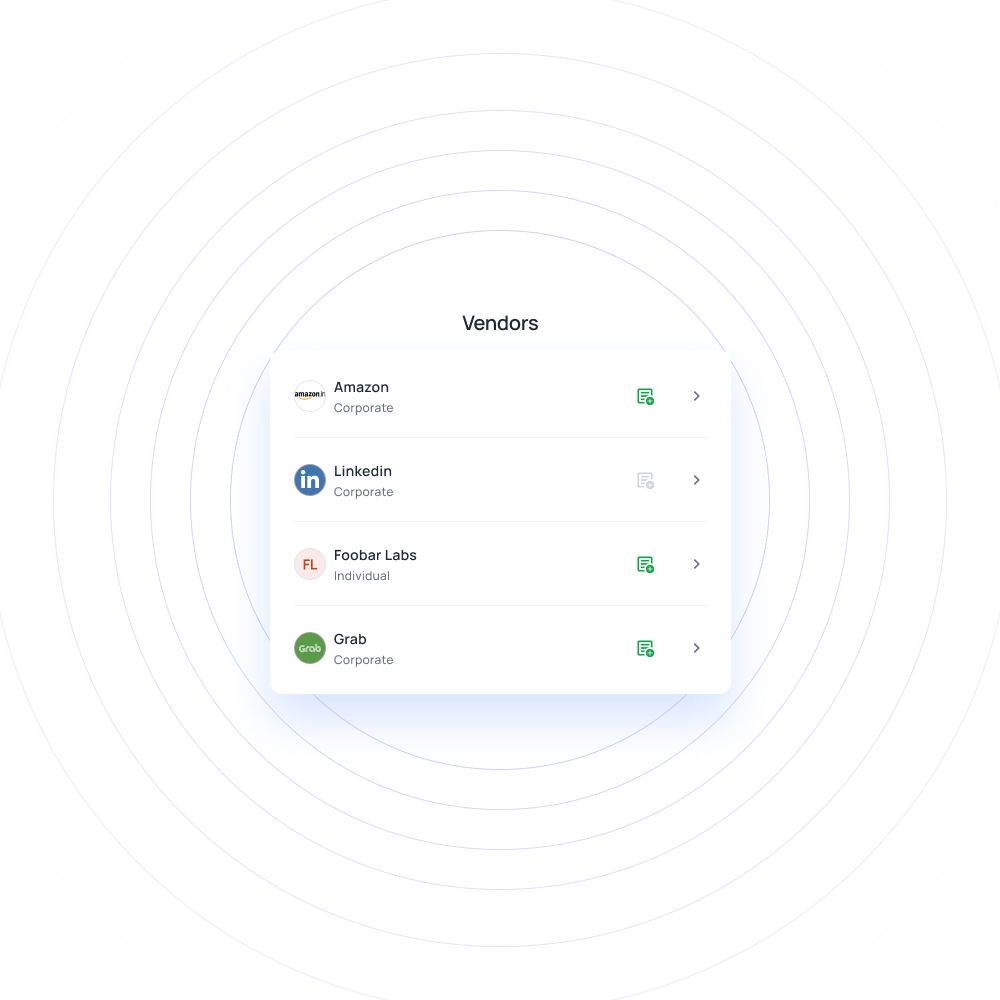
How does a vendor management system function?
A VMS functions by centralizing and automating key tasks involved in managing vendor relationships. From onboarding to performance tracking and compliance, a VMS streamlines the entire vendor lifecycle. This enhances operational efficiency, reduces risks, and enables businesses to make informed decisions through data-driven insights.
Centralizing vendor information
A VMS centralizes all vendor-related information in one place, making it easily accessible to stakeholders. This includes contact details, contracts, performance records, compliance documents, and transaction histories.
Centralization simplifies data management, allowing businesses to quickly retrieve vendor data when needed.
It also helps with accurate reporting and decision-making, ensuring that vendor information is consistent and up-to-date.
Centralization boost team collaboration, reduces duplication of efforts, and improves overall visibility into vendor performance, contributing to better vendor management.
Automating vendor onboarding processes
A VMS automates the vendor onboarding process, making it faster and more efficient. It streamlines tasks such as vendor registration, document submission, and compliance checks.
Automation reduces administrative burdens, minimizes errors, and ensures that vendors meet all necessary qualifications before entering into agreements.
This process speeds up vendor integration into the business’s procurement systems, helping vendors start delivering services sooner.
Additionally, automated onboarding ensures consistent adherence to company policies, reduces delays, and fosters better alignment between vendors and business requirements from the start.
Monitoring compliance and risk
Compliance and risk management are critical elements of vendor management. A VMS tracks vendor adherence to regulatory standards, such as labor laws and environmental regulations.
It also helps businesses assess and mitigate risks by monitoring factors like financial stability, security practices, and potential legal issues.
This proactive monitoring reduces the chances of disruptions and legal complications.
Moreover, it allows businesses to anticipate and address risks before they escalate, ensuring that vendors remain compliant and aligned with the company's risk management strategies and policies.
Vendor performance management
A key function of a VMS is tracking vendor performance using key performance indicators (KPIs). It continuously monitors metrics like delivery times, product quality, and service reliability.
By providing real-time data and generating performance reports, businesses can easily assess how well vendors are meeting expectations.
This helps identify underperforming vendors early and ensures consistent service quality.
Additionally, tracking performance over time allows businesses to make informed and timely decisions about renewing contracts, adjusting terms, or recognizing top-performing vendors, fostering meaningful long-term improvements in vendor relationships.
Better collaboration and communication
A VMS facilitates better communication and collaboration between businesses and their vendors. It provides centralized communication channels for updates, requests, and issue resolution.
This reduces the likelihood of miscommunication and ensures that all parties are aligned on goals, timelines, and deliverables.
Streamlined communication enhances collaboration and helps resolve problems faster, leading to stronger vendor relationships.
Additionally, it fosters transparency, ensures timely responses, and improves coordination, ultimately resulting in more efficient operations and a higher level of trust between the business and its vendors.
Analyzing data and generating reports
A VMS collects and analyzes vendor data, offering insights into vendor performance, spending trends, and compliance issues.
It generates detailed reports that help businesses evaluate vendor effectiveness and identify areas for improvement.
Data analysis supports decision-making by highlighting opportunities for cost savings, risk mitigation, and enhanced operational efficiency. These insights enable businesses to optimize their vendor management strategies.
Additionally, the ability to effectively track long-term trends and thoroughly compare vendor performance over time empowers businesses to make data-driven adjustments, ultimately strengthening overall vendor relationships and procurement processes.
Handling procurement and purchasing
The VMS automates procurement and purchasing processes, from issuing purchase orders to managing inventory and supplies.
It integrates with the business’s procurement system to ensure that vendor orders are processed efficiently and that goods or services are delivered on time.
By automating these workflows, businesses can reduce procurement cycle times and avoid delays, improving supply chain efficiency.
Moreover, it enhances accuracy in order processing, reduces manual intervention, and provides visibility into procurement activities, leading to better inventory management and cost control across the organization.
Managing contracts and agreements
A VMS provides tools for managing contracts and agreements with vendors. It stores contracts digitally, making it easier to track key terms, deadlines, and renewal dates.
Automated alerts help businesses stay on top of contract milestones, ensuring compliance and timely renewals.
This reduces the risk of overlooked terms and improves overall contract management efficiency.
It also allows businesses to standardize contract processes, ensuring consistent enforcement of terms, and providing a centralized location for easy retrieval and review of important contract details.
Processing invoices and payments
The system streamlines invoice processing and payment workflows, ensuring timely payments to vendors.
It automates the review, approval, and payment of invoices, reducing manual tasks and minimizing errors.
The VMS also ensures that payments align with agreed-upon terms and contract conditions, helping businesses avoid disputes while maintaining strong vendor relationships.
Furthermore, by providing visibility into payment statuses and histories, the system enables more accurate financial forecasting and improves cash flow management for both businesses and vendors.
What are the benefits of implementing a VMS in your business?
Implementing a Vendor Management System (VMS) offers numerous advantages to businesses by simplifying and optimizing vendor-related tasks. From improving efficiency to enhancing transparency and risk management, a VMS transforms how companies manage vendor relationships and procurement processes, driving better outcomes and long-term success.
Enhanced efficiency in managing vendors
A VMS streamlines the entire vendor lifecycle by automating tasks such as onboarding, contract management, and performance tracking.
By reducing manual tasks and centralizing vendor data, businesses can handle vendor relationships more efficiently.
This enhanced efficiency leads to faster procurement cycles, fewer errors, and improved resource allocation, allowing companies to focus on strategic activities rather than administrative work.
Increased transparency and vendor insights
With all vendor data stored in a single platform, a VMS provides greater transparency into vendor performance, compliance, and contractual obligations.
It offers real-time visibility into key metrics and vendor activities, enabling businesses to make more informed decisions.
This transparency helps companies identify issues early and provides valuable insights for optimizing vendor relationships.
Optimized cost management and savings
A VMS helps businesses manage costs more effectively by centralizing procurement processes, tracking expenditures, and identifying cost-saving opportunities.
By automating invoice processing and aligning payments with contract terms, businesses can avoid overpayments and unnecessary expenses.
Additionally, the system allows for better negotiation and vendor selection based on cost efficiency, ultimately leading to long-term savings.
Advanced performance measurement
A VMS tracks key performance indicators (KPIs) such as delivery times, quality, and service reliability, offering a clear view of vendor performance.
With regular performance reviews, businesses can identify areas where vendors excel or need improvement.
Advanced performance measurement helps ensure that vendors consistently meet established expectations, leading to improved service quality and better overall results.
Streamlined vendor communication
Effective communication is essential for successful vendor management. A VMS provides centralized communication channels for managing updates, feedback, and issue resolution.
By improving communication, businesses can prevent misunderstandings, address concerns promptly, and foster stronger collaboration.
Streamlined communication leads to smoother operations and more effective partnerships with vendors.
Enhanced data accuracy
By consolidating all vendor information and automating data entry, a VMS ensures more accurate and up-to-date records.
This improved data accuracy helps prevent errors in billing, reporting, and contract management.
Accurate data allows businesses to make informed decisions, ensuring that vendor relationships are based on reliable insights rather than outdated or incorrect information.
Increased process automation
The vendor management system efficiently automates several repetitive and time-consuming tasks, such as managing purchase orders, invoice approvals, and performance tracking across multiple vendors.
This automation significantly reduces the administrative burden on staff, speeds up operational workflows, and minimizes human error in daily processes.
As a result, businesses experience improved accuracy, reduced lead times, and enhanced efficiency across vendor-related processes.
Proactive risk management
A VMS helps businesses identify and mitigate risks associated with vendor management, such as regulatory compliance, financial instability, and supply chain disruptions.
The system continuously monitors vendor performance, financial health, and compliance with legal requirements, allowing businesses to address risks before they escalate.
Proactive risk management helps maintain operational stability and reduces potential liabilities.
Scalable and flexible solutions
As businesses grow, a VMS can scale to manage an increasing number of vendors without compromising efficiency.
The system can accommodate more vendors, higher transaction volumes, and complex supply chain requirements, making it ideal for companies experiencing growth.
Additionally, its flexibility allows businesses to customize workflows, adapt to changing business needs, and integrate with other software systems.
Efficient procurement processes
A VMS automates and streamlines procurement tasks, from issuing purchase orders to tracking deliveries and payments.
This improves the efficiency of procurement operations, reduces lead times, and ensures timely deliveries.
By optimizing procurement processes, businesses can reduce operational costs, minimize delays, and improve supply chain management, leading to more effective vendor partnerships.
Role of a vendor management system in procurement and purchasing processes
A vendor management system plays a crucial role in optimizing procurement and purchasing operations. By automating processes, centralizing data, and enhancing communication, a VMS ensures that businesses can manage vendors more efficiently, reduce procurement cycle times, and maintain compliance, ultimately leading to streamlined supply chain management.
Automates requisition and purchase orders
A VMS automates the requisition and purchase order process, eliminating manual tasks such as creating, approving, and sending purchase orders to vendors.
This reduces human errors, shortens approval times, and ensures timely processing of procurement requests.
Automation enhances operational efficiency by speeding up the ordering process and ensuring that goods and services are ordered in alignment with business needs.
Reducing procurement cycle time
A VMS reduces procurement cycle times by automating time-consuming tasks such as vendor selection, purchase order approvals, and invoice processing.
This results in faster procurement operations, allowing businesses to respond more quickly to supply chain needs and reducing delays in product or service delivery.
Shorter procurement cycles lead to increased efficiency and improved overall business performance across various departments.
Monitors vendor performance
By tracking key performance indicators (KPIs), such as delivery accuracy, product quality, and service reliability, the VMS helps procurement teams monitor vendor performance.
Businesses can assess vendor compliance with contractual terms and identify areas for improvement, enabling them to manage underperforming suppliers or reward those that consistently meet expectations.
Vendor selection & evaluation
A VMS helps streamline the vendor selection and evaluation process by automating vendor comparisons based on predefined criteria such as price, quality, delivery timelines, and compliance.
The system simplifies the process of vetting potential suppliers and ensures that businesses select the best vendors for their procurement needs, saving valuable time and ensuring better supplier alignment.
Enhancing communication with vendors
By providing dedicated communication channels, a VMS improves coordination between businesses and vendors.
The system facilitates real-time updates on order statuses, queries, and delivery changes, reducing miscommunication.
Improved communication ensures smoother collaboration, helping resolve issues quickly and ensuring that both parties remain aligned throughout the procurement process.
Tracking order status and delivery timelines
A VMS provides real-time tracking of order statuses and delivery timelines, allowing procurement teams to monitor the progress of shipments and ensure timely deliveries.
This tracking capability enhances transparency and reduces delays, as businesses can identify and address potential issues before they impact operations.
It also helps in managing supplier performance more effectively.
Managing supplier contracts and agreements
The VMS enables businesses to manage supplier contracts and agreements with ease.
It stores all contract information, automates renewal reminders, and ensures that procurement teams adhere to contract terms.
This functionality prevents contract lapses, avoids disputes over terms, and helps maintain compliance with vendor agreements, leading to more reliable vendor relationships.
Centralizes vendor and procurement information
The VMS centralizes all vendor-related and procurement information in a single platform, making it accessible to all relevant stakeholders.
This includes vendor profiles, contracts, performance metrics, and procurement histories.
Centralization improves visibility across the organization, allowing procurement teams to make informed decisions quickly and manage vendor relationships more effectively.
Automates the invoice matching process
A VMS automates the invoice matching process by comparing purchase orders, receipts, and vendor invoices.
This reduces the chances of payment discrepancies and ensures that businesses only pay for goods and services they have received.
Automating this process speeds up payment cycles, reduces the workload on procurement teams, and minimizes disputes with vendors over invoicing errors.
Ensuring compliance with procurement policies
The VMS helps ensure that all procurement activities are in line with company policies and regulatory standards.
It enforces compliance by automating approval workflows, diligently tracking documentation, and continuously monitoring adherence to legal requirements.
By maintaining consistent compliance, businesses can avoid penalties, safeguard their reputation, and streamline audit processes.
How does a VMS help manage vendor compliance issues?
A vendor management system helps businesses manage vendor compliance by centralizing critical documentation, automating tracking, and enforcing adherence to regulations and contract terms. Through its monitoring and reporting capabilities, a VMS ensures that vendors meet the required standards, reducing risks associated with non-compliance and improving overall vendor accountability.
Centralizes documentation
A vendor management system centralizes all compliance-related documents, such as certifications, insurance policies, safety records, and regulatory filings.
This enables businesses to quickly and easily access, organize, and efficiently track vendor compliance information in one centralized location.
Having a unified repository of compliance data reduces the risk of misplaced or outdated documentation, and ensures that information is current, and readily accessible for audits or reviews, allowing companies to maintain transparency and accountability in their vendor management processes.
Automates compliance tracking
A VMS automates the tracking of compliance deadlines, certifications, and legal requirements.
It sends proactive alerts and timely reminders to vendors and internal teams when compliance documents are due for renewal, need to be updated, or require review, helping businesses and vendors meet regulatory obligations without delays.
Automation minimizes the risk of missing important deadlines, ensures continuous compliance, and reduces manual effort, thereby enhancing efficiency and allowing organizations to focus on more strategic aspects of vendor management.
Provides compliance reporting
The VMS generates detailed, real-time compliance reports that help businesses track vendor performance against various compliance standards, including regulatory, legal, and ethical benchmarks.
These comprehensive reports provide valuable insights into vendor adherence, identify regulatory gaps, and highlight areas for improvement or potential risk.
With clear, actionable data at their disposal, businesses can proactively address compliance issues early on, ensuring that all vendors are operating within required legal and ethical boundaries while minimizing the risk of non-compliance penalties.
Ensures contract compliance
A VMS helps enforce contract compliance by ensuring that vendors consistently adhere to the specific terms and conditions outlined in their agreements.
It continuously monitors key contractual obligations, such as service level agreements (SLAs), delivery timelines, pricing terms, and quality standards.
By automating the tracking of contract compliance, businesses can reduce the likelihood of disputes, avoid costly risks, and ensure that vendors fulfill their contractual commitments.
This oversight fosters stronger vendor partnerships and helps ensure that performance remains aligned with agreed-upon expectations.
Increases vendor accountability
By maintaining a transparent and comprehensive record of vendor compliance and performance, a VMS significantly increases vendor accountability.
Vendors are fully aware that their activities, adherence to regulatory requirements, and overall performance are being monitored and evaluated in real time.
This level of transparency motivates vendors to consistently meet compliance standards, reducing the likelihood of non-compliance and misconduct.
Additionally, it fosters more responsible and proactive vendor partnerships, as vendors are encouraged to maintain high standards and work collaboratively with businesses to uphold contractual and regulatory obligations.
Conducts regular audits
A VMS facilitates regular audits of vendor compliance by organizing and storing all necessary data in one centralized location for easy access.
Businesses can efficiently review vendor activities, track compliance metrics, and assess risks with the help of automated reporting and analysis tools.
Automated audit features ensure vendors are regularly evaluated against established compliance standards, helping organizations quickly identify potential issues and implement corrective measures.
This consistent evaluation process provides peace of mind, reduces the likelihood of regulatory violations, and mitigates the risk of costly legal or financial consequences.
Simplify vendor management using Volopay
What are the key features of an effective vendor management system?
A self-service portal within a VMS allows vendors to manage their profiles, submit required documents, update contact details, and track compliance status without needing constant oversight from the business.
This autonomy reduces administrative workloads for procurement and compliance teams by minimizing manual data entry and follow-ups. It also ensures that vendor information is always accurate and up-to-date.
Additionally, the self-service portal significantly enhances vendor satisfaction by giving them more control over their data and the ability to easily resolve issues or update their records independently and efficiently.
With paperless onboarding, a VMS eliminates the need for physical paperwork during the vendor registration and onboarding process.
Vendors can securely submit required documents electronically, while the system automatically verifies their compliance with company policies and regulatory requirements. This approach significantly speeds up the onboarding process, reduces manual errors, and enhances data accuracy.
Moreover, it promotes eco-friendly practices by reducing paper usage, contributing to sustainability goals within procurement operations, and creating a more streamlined and efficient workflow.
An effective VMS provides comprehensive vendor visibility by offering real-time insights into vendor performance metrics, contract terms, compliance status, and risk factors.
This transparency allows businesses to closely monitor vendor activities, ensuring they meet the required standards and fulfill their contractual obligations.
Enhanced visibility helps identify potential issues early on, such as delays or non-compliance, giving businesses better control over vendor relationships and the ability to proactively address problems before they escalate, ultimately fostering stronger, more accountable partnerships.
A centralized database is one of the core features of an effective VMS, consolidating all vendor-related information, including contact details, contracts, performance metrics, financial records, and compliance documentation, in one easily accessible location.
This system enhances efficiency by enabling quick access to crucial data and simplifying vendor management across various departments.
With all vendor information centralized on a single platform, businesses can simplify workflows, improve collaboration, and make more informed, data-driven decisions, leading to better vendor performance management and compliance tracking.
Performance tracking tools within a VMS allow businesses to monitor vendor performance using key performance indicators (KPIs) such as delivery timelines, product quality, service reliability, and cost efficiency.
An effective VMS continuously tracks and records these metrics, providing real-time insights and detailed performance reports. This allows businesses to regularly assess vendors' effectiveness, address any performance gaps promptly, and improve overall vendor management.
By identifying trends in vendor performance, companies can take corrective actions, negotiate better terms, or even replace underperforming vendors when necessary to ensure optimal operational efficiency.
A VMS equipped with robust reporting tools enables businesses to generate detailed reports on various aspects such as vendor performance, compliance status, spend analysis, risk exposure, and contract adherence.
These reports provide valuable insights into vendor operations and financial impact, enabling businesses to make informed decisions, optimize vendor selection, and improve procurement processes.
By analyzing data from these reports, companies can align vendor management strategies with organizational goals, reduce costs, and mitigate risks, ensuring long-term, successful vendor relationships and operational efficiency.
Contract management features within a VMS enable businesses to store, track, and manage all vendor contracts in one centralized platform.
The system ensures that contract terms, such as service level agreements (SLAs), pricing conditions, and delivery schedules, are adhered to. It also sends timely alerts for upcoming contract renewals, expirations, or potential breaches, allowing businesses to address issues proactively.
This functionality minimizes legal risks, ensures regulatory and contract compliance, and helps businesses maintain strong vendor relationships by keeping all parties aligned with contractual obligations and avoiding potential disputes that could disrupt operations.
An efficient VMS streamlines the vendor onboarding process by automating tasks such as document submission, compliance checks, background verifications, and approval workflows.
This automation accelerates the onboarding timeline, ensuring that vendors are qualified, meet compliance requirements, and have provided necessary documentation before beginning work.
A smooth and efficient onboarding process not only reduces administrative burdens but also integrates vendors more quickly into procurement workflows, improving operational efficiency and setting a solid foundation for long-term collaboration.
Vendor screening tools within a VMS enable businesses to assess potential vendors based on their financial health, compliance records, certifications, and past performance.
An effective VMS conducts comprehensive background checks, including creditworthiness, legal history, and ethical practices, helping companies avoid unreliable or high-risk vendors.
Proper screening minimizes the likelihood of future issues, such as financial instability or non-compliance, ensuring that only qualified, trustworthy vendors are selected for procurement partnerships. This process reduces risks and enhances the long-term success of vendor relationships.
Supplier performance management features enable businesses to continuously evaluate their vendors' effectiveness using predefined key performance indicators (KPIs), such as delivery times, product quality, pricing accuracy, and cost efficiency.
By tracking and analyzing these metrics in real time, businesses can identify underperforming vendors and take corrective actions, such as renegotiating terms or replacing the supplier.
This ongoing evaluation ensures consistent supplier performance, reduces operational risks, and strengthens vendor relationships, ultimately contributing to improved supply chain efficiency and procurement success.
Spend management tools help businesses effectively monitor and control procurement expenses by tracking purchases, payments, and vendor-related costs.
An effective vendor management system (VMS) provides real-time visibility into spending patterns, enabling businesses to identify cost-saving opportunities and ensure that procurement budgets are managed efficiently and responsibly.
This ongoing evaluation enhances financial accountability, minimizes overspending, and supports better decision-making, ultimately leading to improved budget management and procurement success across the organization.
An effective vendor management system (VMS) integrates seamlessly with various business systems, including Enterprise Resource Planning (ERP), procurement, and accounting platforms.
This integration ensures a smooth data flow across departments, improving procurement processes and overall business operations.
Integration capabilities empower businesses to leverage existing technologies and create a more cohesive, efficient vendor management software solution that aligns with their unique operational needs, ultimately driving better decision-making and operational efficiency throughout the organization.
How to implement a vendor management system in your business?
Implementing a vendor management system requires careful planning and execution to ensure it meets your company’s procurement and vendor management needs. By setting clear objectives, selecting the right system, and providing proper training, you can streamline vendor operations, improve compliance, and enhance efficiency across your business.
Set clear goals for the VMS
Before implementing a VMS, it’s essential to define clear goals that align with your business needs.
These may include improving vendor relationships, streamlining procurement processes, or enhancing compliance management.
Clearly identifying these objectives will guide the implementation process and help measure the system’s success in meeting those goals.
Select a suitable VMS
Choosing the right VMS involves evaluating the specific features that your business requires.
Consider factors such as vendor performance tracking, automation, compliance management, and integration with existing systems.
Select a solution that aligns with your business processes and scalability needs to ensure long-term benefits from the system.
Develop a detailed implementation plan
A detailed implementation plan outlines the steps required to successfully integrate the VMS into your business.
This plan should include timelines, assigned responsibilities, and key milestones.
By mapping out the process, you ensure that every aspect of the implementation is addressed and that the transition to the new system runs as smoothly as possible.
Form a project team for implementation
Assemble a dedicated project team to oversee the implementation process.
This team should include representatives from relevant departments such as procurement, IT, and finance.
A collaborative team ensures that the system effectively meets the needs of all stakeholders, and they can manage system customization, data migration, and comprehensive training.
Set up and customize the VMS
Once the VMS has been selected, it needs to be set up and customized according to your business requirements.
This includes configuring workflows, performance tracking metrics, and compliance standards.
Customization ensures that the system aligns with your company’s specific procurement processes and vendor management needs.
Transfer existing vendor data
Migrating vendor data from previous systems or manual records to the new VMS is a crucial step.
Ensure all vendor information, contracts, compliance documents, and performance records are accurately transferred.
This process guarantees a seamless transition and provides a comprehensive, centralized view of vendor data from the outset.
Provide proper training for system users
Proper training is essential to ensure that your team can use the VMS effectively.
Organize training sessions to familiarize users with system features, workflows, and best practices.
Ensuring that all relevant personnel thoroughly understand the system’s functionality will maximize its overall effectiveness and reduce the learning curve after launch.
Conduct testing to ensure smooth functionality
Before fully launching the VMS, conduct thorough testing to ensure that all features work as expected.
Testing helps identify any issues or bugs that need to be resolved before the system goes live.
This step ensures that the system operates smoothly and meets the needs of your procurement and vendor management teams.
Launch the VMS across your business
After successful testing, launch the VMS across your business.
Ensure that all users have full access to the system and that they are aware of its key functionalities and benefits.
A well-coordinated launch accompanied by clear communication will encourage user adoption and significantly set the stage for ongoing success in managing vendor relationships.
Regularly review and monitor system use
Once the VMS is in place, regularly review its performance and usage to ensure it continues to meet your business goals.
Monitor user engagement, vendor performance, and procurement efficiencies.
Regular evaluations will help you identify potential opportunities for improvement and ensure that the system remains a consistently valuable asset to your organization.
What are the challenges faced by businesses following VMS implementation?
After implementing a vendor management system, businesses may encounter several challenges that affect system adoption and performance. These issues can range from user resistance to difficulties with system integration. Addressing these challenges effectively ensures a smoother transition and maximizes the benefits of the VMS for managing vendors and procurement processes.
Resistance to system adoption
One of the common challenges post-implementation is resistance from employees. Some staff may be reluctant to adopt the new system, preferring familiar, manual processes.
Overcoming this requires effective communication on the system’s benefits, offering incentives for use, and providing ongoing support.
Clear leadership and employee engagement can help mitigate resistance and encourage widespread adoption.
Insufficient user training
Even with a well-configured VMS, insufficient training for users can result in underutilization or incorrect usage of the system.
Without comprehensive training, employees may struggle to understand key features, leading to inefficiencies.
Addressing this challenge requires investing in robust, ongoing training programs that equip all users with the necessary knowledge and skills to operate the VMS effectively.
Issues with system integration
Integrating a VMS with existing systems like Enterprise Resource Planning (ERP) or financial management tools can present challenges.
Incompatibility between systems may lead to data transfer issues or limited functionality.
To address this, businesses need to ensure compatibility before selecting a VMS and work closely with vendors to customize the system for smooth integration.
Difficulties in data migration
Transferring vendor data from legacy systems to the VMS can be complex, especially if there is a large volume of information or inconsistencies in existing records.
Poor data quality or incomplete migration can hinder the system’s effectiveness.
To overcome this, businesses must prioritize data cleansing before migration and perform extensive testing to ensure accurate data transfer.
Complex configuration requirements
Customizing a VMS to fit specific business needs can be a daunting task.
The system may require complex configuration to align with existing workflows, performance metrics, and regulatory requirements.
This complexity can slow down implementation and lead to errors. Businesses should work closely with VMS providers to streamline configuration and ensure all critical aspects are set up properly.
Unexpected implementation costs
VMS implementation may incur unexpected costs, such as additional software, customization, or consulting fees.
These unforeseen expenses can strain budgets, particularly for smaller businesses.
To avoid this, it’s essential to conduct thorough planning and budgeting before implementation, including factoring in potential hidden costs, to ensure financial preparedness.
Limited vendor support
In some cases, businesses may find that the level of support from the vendor management system provider is inadequate.
Limited vendor support can cause delays in resolving system issues or customization requests.
To mitigate this, it’s important to choose a VMS provider with a strong reputation for excellent customer service and to establish clear support agreements upfront.
Customization challenges
While customization is critical for aligning a VMS with business needs, excessive or poorly executed customization can create challenges.
Over-customizing the system may lead to unnecessary complexity, making it harder for users to navigate.
It’s important to strike a balance between necessary customization and keeping the system user-friendly to ensure smooth functionality.
Ensuring compliance with regulations
After implementation, ensuring that the VMS supports compliance with industry regulations and internal policies can be a challenge.
Businesses must continuously monitor the system to ensure it enforces regulatory requirements, such as data security and procurement laws.
Regular audits and compliance checks can help ensure that the vendor management system operates within legal frameworks.
Measuring system performance accurately
Accurately measuring the performance and ROI of a VMS can be difficult, particularly in the early stages of implementation.
Without clear metrics, businesses may struggle to assess whether the system is delivering the expected benefits.
Establishing KPIs before implementation and tracking them regularly can help businesses measure the system’s success over time.
Effective strategies for overcoming challenges post-VMS implementation
Successfully navigating the challenges that arise after implementing a Vendor Management System (VMS) requires proactive strategies.
Businesses should focus on continuous training, regular audits, and ongoing communication to ensure smooth operations. By refining processes and monitoring system performance, companies can optimize the effectiveness of their VMS and reap its long-term benefits.
1. Provide continuous training and support
Even after the initial training, continuous support is crucial for ensuring that all users effectively operate the VMS.
Businesses should offer refresher courses, access to tutorials, and support resources to keep employees up to date with new features and best practices. This reduces resistance, minimizes errors, and boosts user confidence, improving the system’s overall adoption and efficiency.
2. Conduct regular system audits
Regular system audits help businesses ensure that the VMS is functioning as intended and meeting business needs.
By identifying any gaps, inefficiencies, or compliance issues, companies can address problems before they escalate. Audits also allow businesses to review system configurations, assess vendor performance, and refine processes to ensure ongoing system alignment with organizational goals.
3. Improve integration efficiency
To overcome integration challenges, businesses should work with VMS providers to enhance system compatibility with existing tools such as ERP or accounting software.
Conducting detailed assessments before implementation can help avoid integration roadblocks. Regularly reviewing and updating integrations will ensure smooth data flow and enhance the overall functionality of the VMS.
4. Track and refine processes
Tracking procurement and vendor management processes post-implementation is essential for identifying areas of improvement.
By monitoring key workflows and system performance, businesses can fine-tune their VMS to better support operational goals. Continuous process optimization helps ensure that the VMS remains relevant to evolving business needs and maximizes system ROI.
5. Utilize vendor support effectively
Maximizing the benefits of vendor support is key to resolving technical issues and improving system performance.
Businesses should maintain a strong relationship with their VMS provider, ensuring they have access to timely updates, troubleshooting assistance, and new feature rollouts. Leveraging vendor expertise can help companies navigate challenges quickly and efficiently.
6. Revise data management practices
If data migration or quality issues persist after implementation, businesses should revise their data management practices.
This includes regularly cleaning and updating vendor data, enforcing data entry standards, and conducting periodic checks for accuracy. Improved data management ensures the VMS operates with reliable information, enhancing decision-making and vendor relationship management.
7. Adjust and review budget regularly
Unexpected costs during VMS implementation can strain budgets, so businesses should periodically review and adjust their financial plans.
Monitoring ongoing costs related to system upgrades, training, or additional features ensures that the business stays within budget while still optimizing the system. Regular budget reviews help avoid financial surprises and ensure long-term sustainability.
8. Strengthen communication channels
To overcome communication challenges with vendors and internal teams, businesses should strengthen communication channels through the VMS.
This includes setting up automated notifications, providing self-service options for vendors, and enhancing internal collaboration features. Clear and transparent communication improves vendor relationships, speeds up issue resolution, and ensures smooth procurement operations.
9. Incorporate compliance needs into VMS
Ensuring that the VMS is aligned with compliance requirements is essential for reducing regulatory risks.
Businesses should continuously update the system to reflect changes in industry regulations, contract terms, and internal policies. Regular compliance reviews and integrating legal standards into system workflows will ensure that the VMS supports all regulatory obligations.
10. Set and evaluate performance metrics
Establishing clear performance metrics is vital for measuring the success of the VMS.
Businesses should set key performance indicators (KPIs) related to vendor performance, cost savings, and system efficiency. Regularly evaluating these metrics allows companies to track the VMS’s impact, make necessary adjustments, and ensure that the system delivers its intended results over time.
Looking for a solution to solve your vendor management-related issues?
How to choose the best vendor management system for your business?
Choosing the right vendor management system is a critical decision for businesses looking to streamline procurement and vendor relationships. The ideal system should align with your business needs, offer flexibility, and provide strong support. By assessing features, integration capabilities, and data protection measures, you can ensure the VMS enhances your operations and scales with your company’s growth.
Identify required features and functionality
The first step in selecting a VMS is identifying the features that are most important to your business.
These may include vendor performance tracking, automated onboarding, contract management, compliance tracking, and risk management.
Understanding your core requirements helps narrow down your options and ensures that the chosen VMS will meet your specific needs.
Check compatibility with existing systems
A crucial factor is how well the VMS integrates with existing software, such as ERP systems, accounting tools, or procurement platforms.
Seamless integration ensures smooth data flow and minimizes disruptions.
Before making a decision, verify that the VMS can connect easily with your current technology stack to avoid costly integration challenges later.
Ensure the system is user-friendly
A VMS should be intuitive and easy to use for both your employees and vendors.
A complicated or difficult-to-navigate system can lead to low adoption rates, inefficiency, and user frustration.
Look for a system with a clean interface, customizable dashboards, and simplified workflows to ensure your team can quickly adapt and make the most of the VMS.
Analyze pricing and overall value
While cost is always a factor, it’s important to balance pricing with the overall value the VMS provides.
Consider both upfront costs and ongoing expenses like maintenance, updates, and training.
Evaluate the system’s features in relation to its price to ensure you’re getting the best value for your investment without sacrificing critical functionality.
Look for reliable customer service and training
Reliable customer support is essential for the long-term success of your VMS.
Ensure that the vendor offers comprehensive training during the onboarding process and ongoing support as your needs evolve.
Look for vendors that provide timely and accessible customer service, whether through live support, chat, email assistance, or detailed user guides and resources tailored to your needs.
Ensure it can grow with your business
Your business may expand, and the VMS you select should be scalable enough to grow with it.
Look for systems that can handle increasing volumes of vendor data, new procurement processes, and additional users without requiring a complete system overhaul.
Scalable vendor management solutions help future-proof your investment and minimize the need for costly upgrades.
Confirm robust data protection and compliance
Data security and compliance should be a top priority when selecting a VMS.
Verify that the system offers strong encryption, secure access controls, and meets regulatory compliance standards, particularly if you handle sensitive financial or supplier data.
Ensuring robust data protection safeguards your business from security breaches and ensures regulatory adherence.
Evaluate the quality of analytics and reporting tools
Effective reporting and analytics are key to optimizing vendor management processes.
Choose a VMS that offers powerful analytics capabilities, including customizable reports on vendor performance, procurement efficiency, and cost management.
Comprehensive reporting tools support better decision-making, enabling your business to refine strategies and drive performance improvements.
How can Volopay optimize your vendor management process?
Volopay offers a comprehensive vendor management system to streamline and enhance your vendor management process. With features tailored to handle everything from cross-border transactions to real-time expense tracking, Volopay simplifies vendor payouts, approval workflows, and data synchronization. By integrating Volopay into vendor management, businesses can improve efficiency, reduce costs, and gain better control over finances.
Handle cross-border transactions seamlessly
Volopay simplifies international payments through its international money transfers feature, supporting multi-currency transactions to make managing global vendors easier. With competitive exchange rates and lower fees, it effectively reduces the costs associated with cross-border transfers.
Volopay’s seamless international payment capabilities ensure that businesses can efficiently pay vendors regardless of geographic location, enhancing global procurement processes.
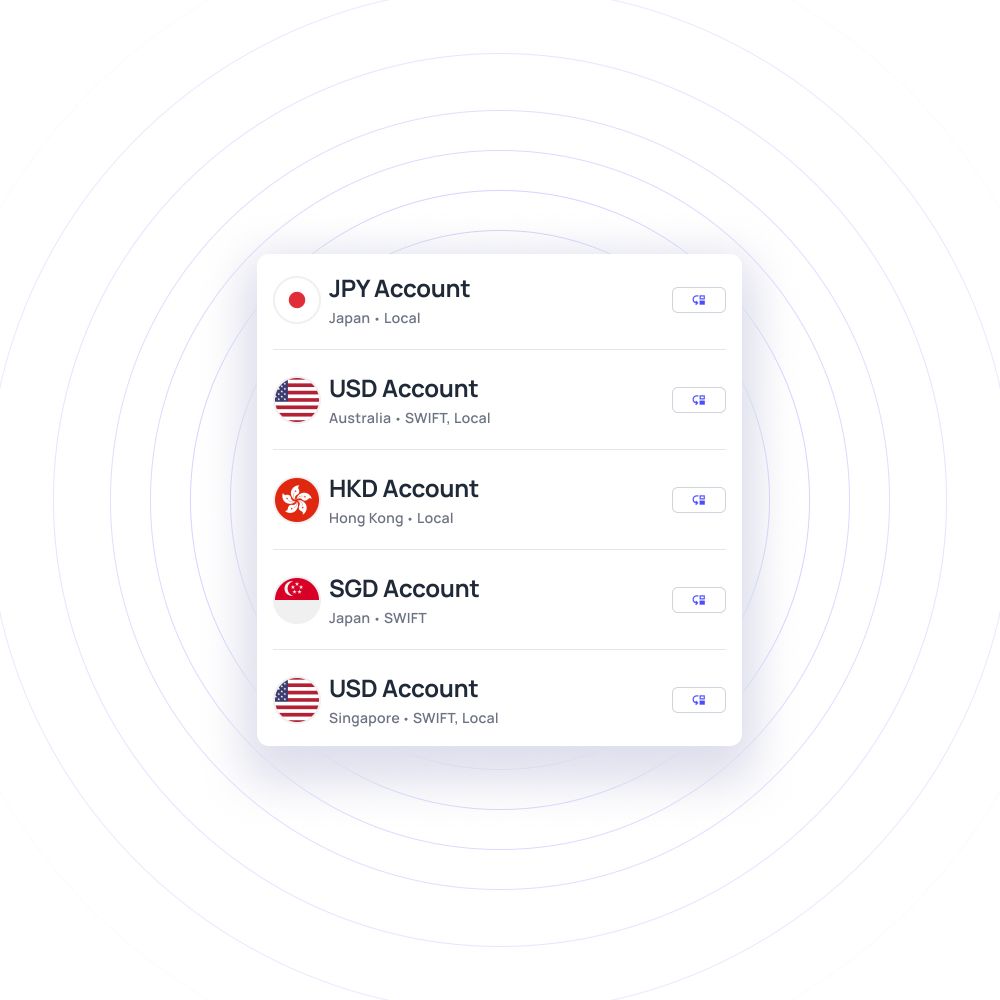
Manage vendor payout schedules
Volopay's accounts payable software allows businesses to schedule vendor payments easily and maintain control over payout timing. With the ability to set automated payment schedules, companies can avoid delays and missed payments.
This organized approach improves vendor relationships and ensures that payouts are made consistently, according to predefined schedules, improving cash flow management.
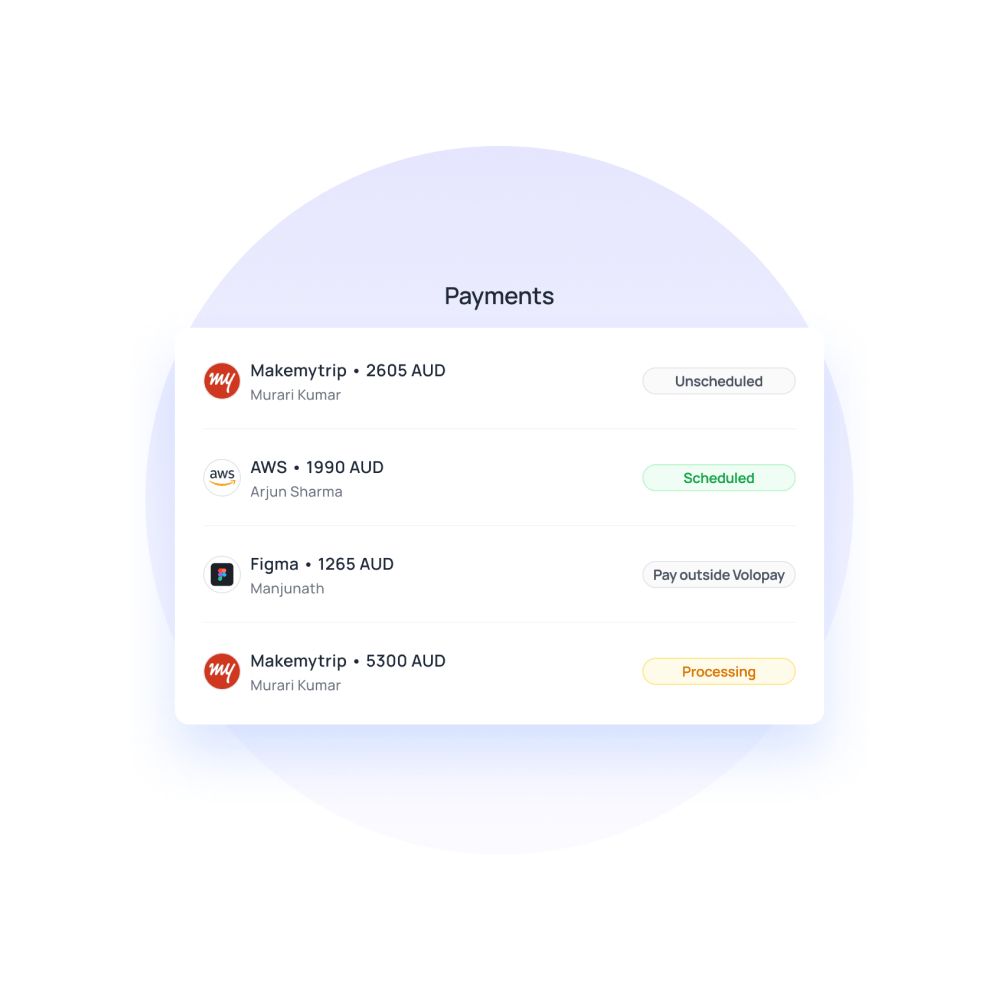
Track and manage all company expenses
Volopay consolidates expense tracking into a single platform, allowing businesses to monitor all expenses, including those related to vendors, in real time.
With Volopay's centralized expense management software, finance teams can gain better visibility and control over their spending, which helps in tracking vendor costs and optimizing financial decision-making.
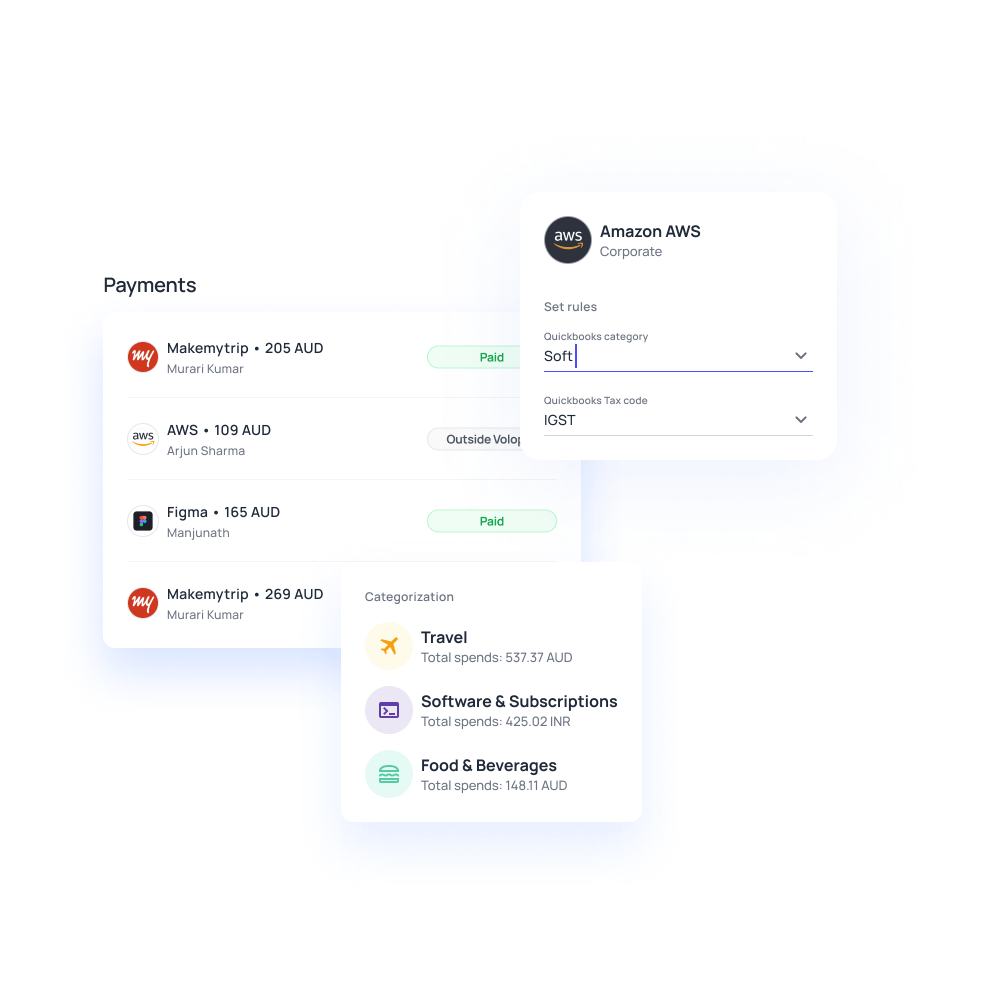
Manage vendor invoices with top-tier efficiency
Volopay offers efficient invoice management by automating invoice capture and processing.
The system allows businesses to quickly upload, categorize, and approve vendor invoices, reducing manual errors and saving time. Automated workflows streamline invoice approvals, ensuring that vendor payments are handled promptly and accurately.
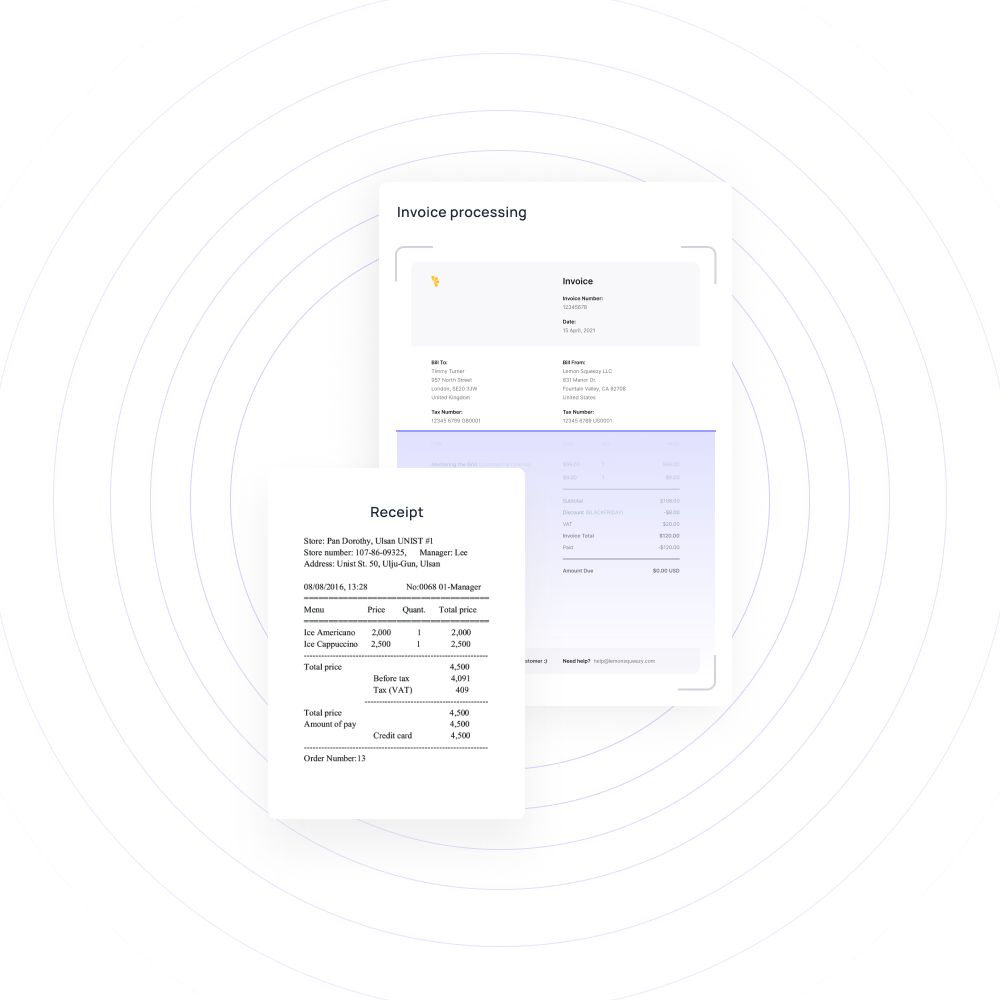
Pay, manage, and track all your vendors on a single platform
Sync transactions with one click
With Volopay’s integration capabilities, businesses can sync transactions directly into their accounting systems, such as Xero, with just one click.
This eliminates the need for manual data entry and reduces the chances of errors. Real-time transaction syncing ensures that financial records are always up to date, improving accuracy and reporting.
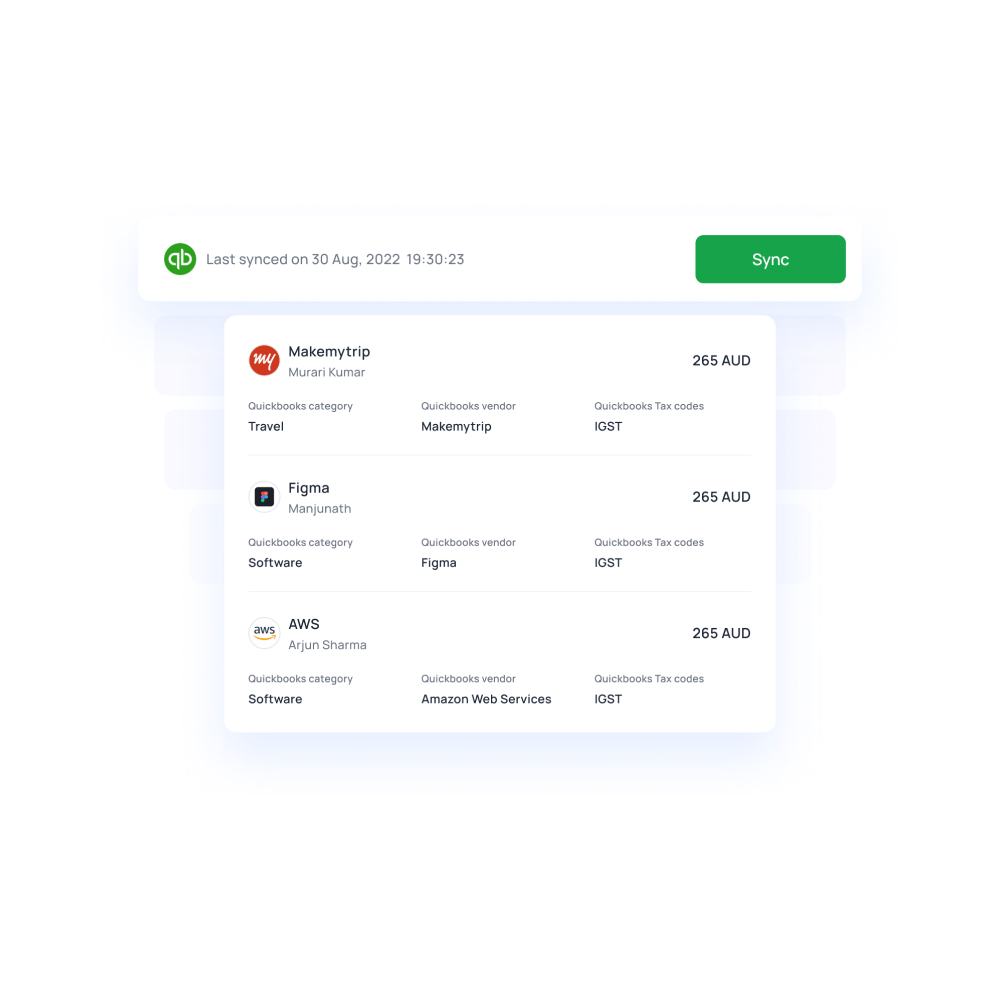
Monitor expenses in real time
Volopay’s real-time expense monitoring feature allows businesses to keep track of vendor payments and other financial activities instantly.
This visibility enables better financial oversight, helping businesses spot anomalies, monitor budget performance, and manage vendor-related costs more effectively. Real-time tracking also aids in making informed financial decisions.

Create custom multi-level approval structures
Volopay allows companies to design custom multi-level approval workflows tailored to their procurement and vendor management processes.
This ensures that vendor payments and expenses are reviewed by the right stakeholders before being approved, enhancing accountability and reducing the risk of unauthorized spending.
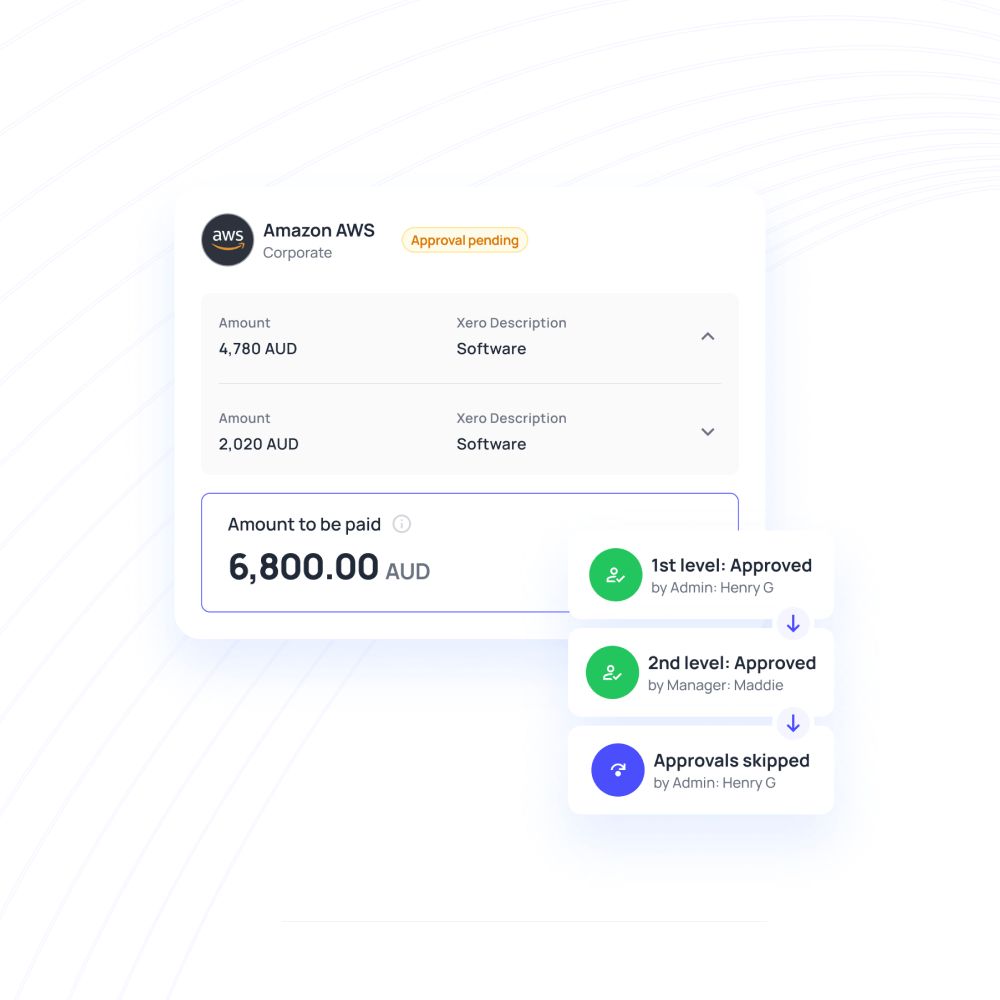
Streamline vendor management process
Volopay’s all-in-one platform simplifies vendor management by automating key processes like payments, approvals, and expense tracking.
With intuitive features, businesses can manage vendor relationships, handle invoices, and monitor financial activities effortlessly. The streamlined processes allow for better organization, improved efficiency, and more productive vendor collaborations.
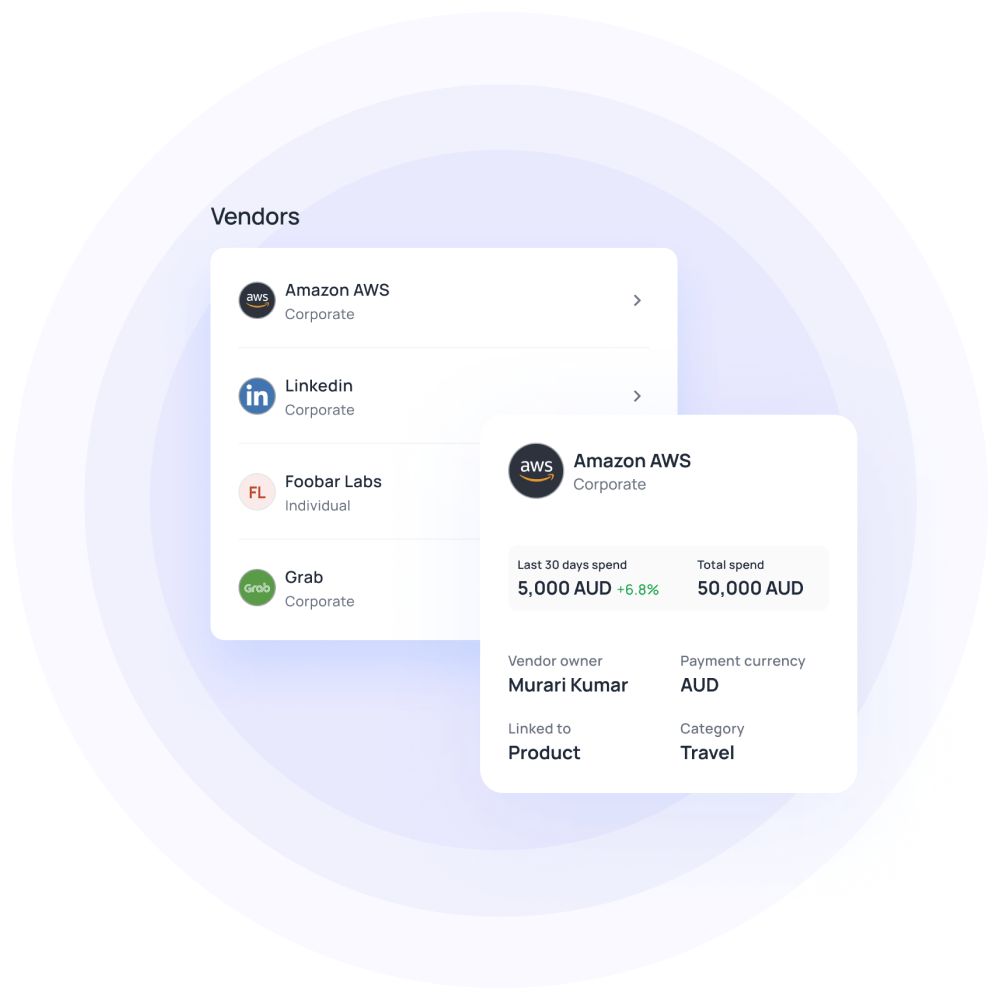
FAQs
Automation in a Vendor Management System (VMS) streamlines key processes like vendor onboarding, invoice processing, and payment scheduling. It reduces manual intervention, minimizes errors, and saves time, improving overall efficiency in managing vendors.
A VMS offers features like performance metrics tracking, real-time reporting, and customizable evaluation criteria. These tools help businesses assess vendor reliability, compliance, and service quality, enabling data-driven performance scoring and decision-making.
The ROI of a VMS is measured by tracking cost savings from automation, reduced manual errors, improved vendor negotiations, and efficiency in procurement processes. Enhanced visibility, better decision-making, and streamlined workflows contribute to higher ROI.
Vendor-managed inventory (VMI) allows vendors to monitor and manage their clients' inventory levels. Through a VMS, vendors get real-time access to stock data, enabling them to restock or adjust inventory based on agreed-upon thresholds, optimizing supply chain efficiency.
A VMS stores and organizes vendor contracts digitally, ensuring easy access and retrieval. It also tracks contract milestones, renewal dates, and compliance requirements. Automated alerts help manage renewals and ensure contractual obligations are met.
A VMS typically offers bulk import functionalities, allowing businesses to upload large volumes of vendor data from spreadsheets or other systems. The system ensures that data is clean, correctly mapped, and validated to prevent inconsistencies.
A VMS collects vendor performance data in real time, tracking KPIs like delivery time, compliance, and quality. It then compiles this data into reports and dashboards, providing insights that facilitate thorough and objective performance reviews.
Related articles
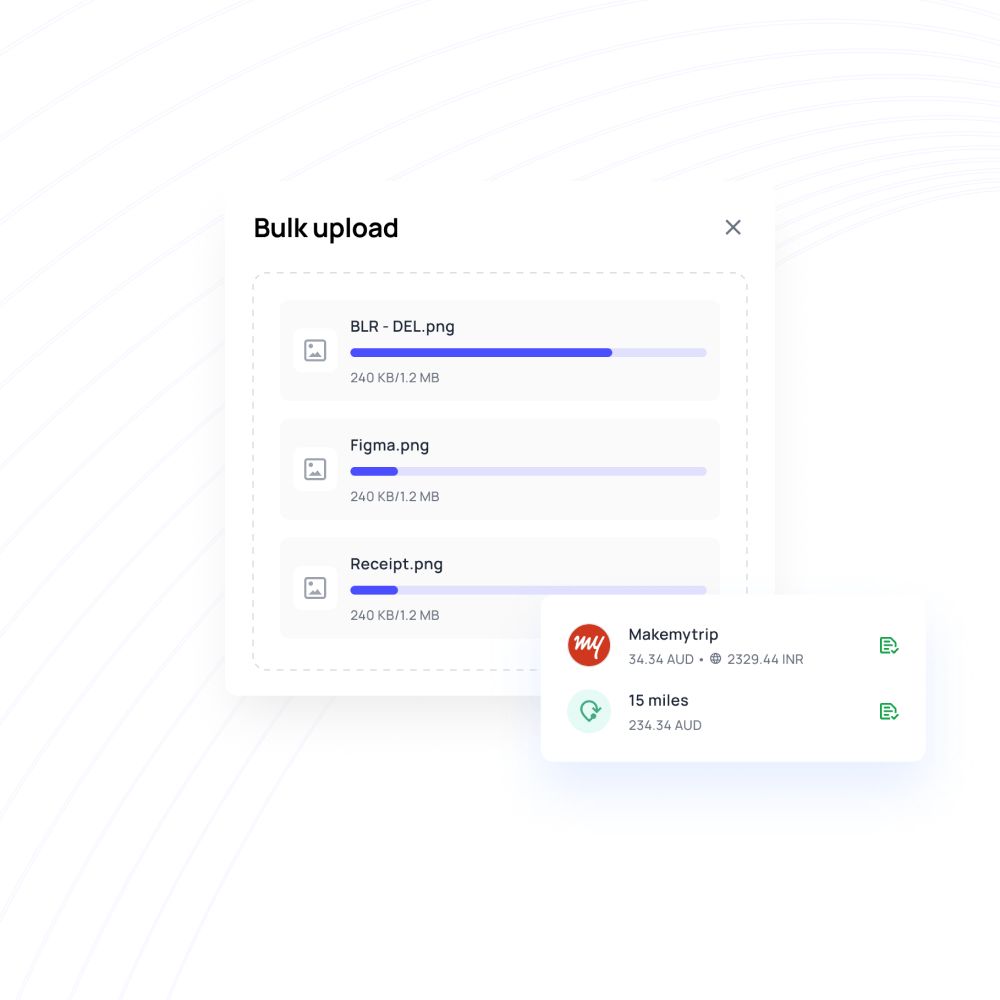
Discover the key differences between accounts payable and receivable, essential financial processes for tracking expenses and incoming payments.
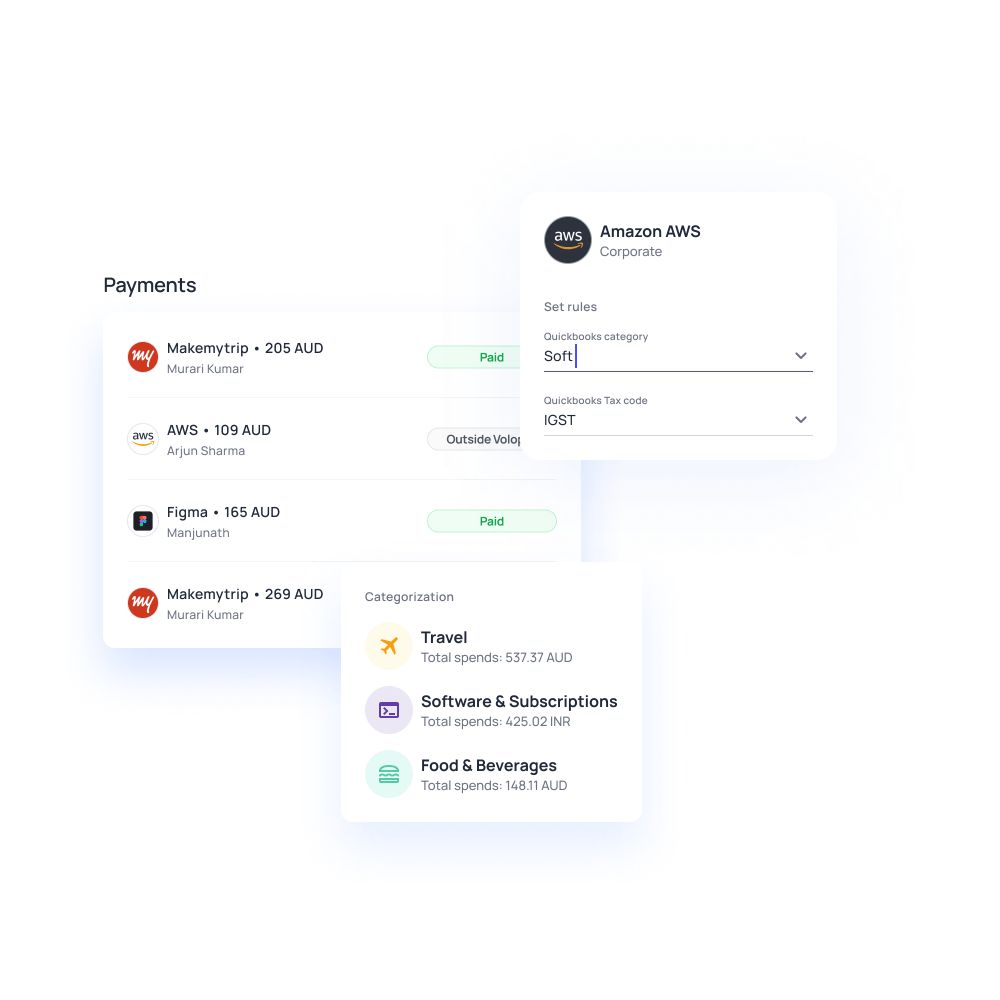
Explore the best accounts payable software in Australia for 2024 to streamline payments, enhance efficiency, and manage finances effectively.
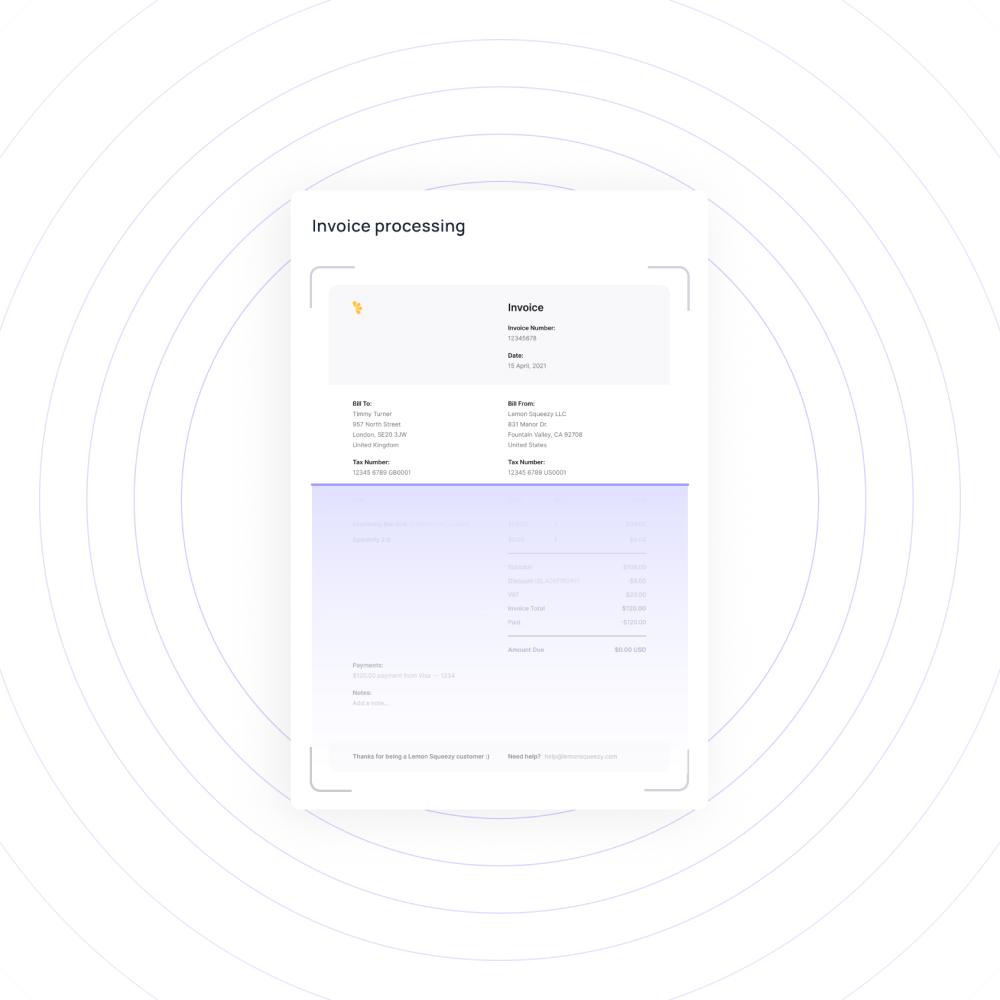
Learn about invoice payment terms, their meaning, importance in business cash flow, and tips for setting clear, effective payment guidelines.
Bring Volopay to your business
Get started free